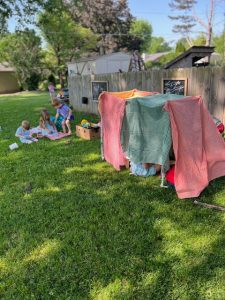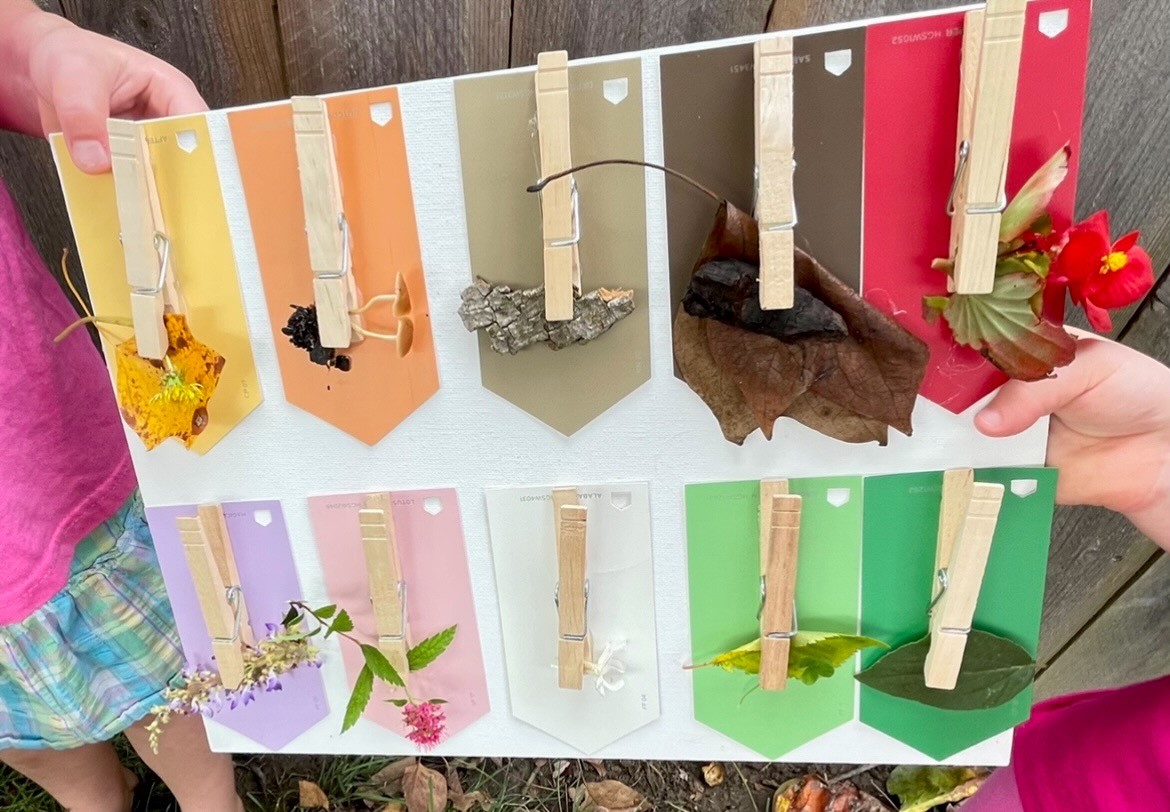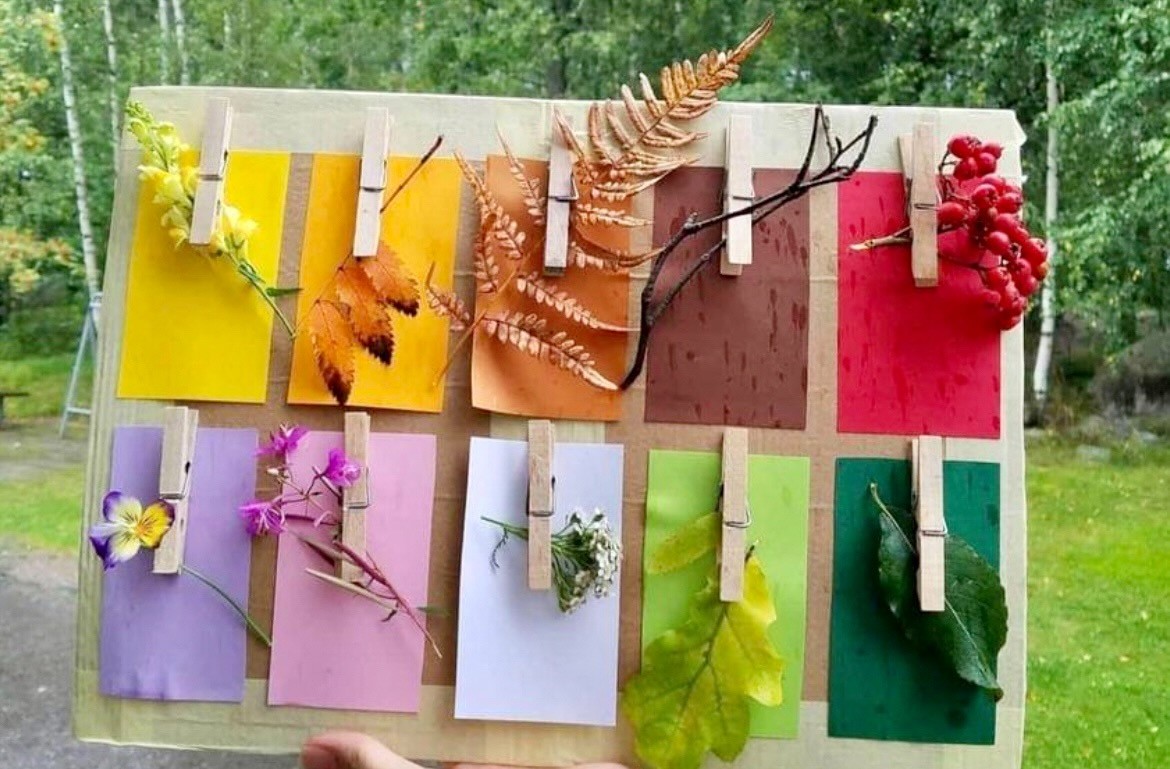Sometimes, if we take a moment to pause and look around (yes, it is hard to do!)…we can really see what is around us. We may realize that many of the answers to questions we ask are already there for us, just waiting to be discovered.
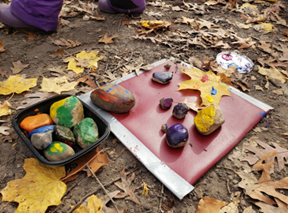 As early childhood educators and professionals, this pause may be through the process of asking a question in a new way, looking for a different outcome, truly seeing with new understanding. Or it may be a stepping stone for something we already know, but takes us into an unexplored direction.
As early childhood educators and professionals, this pause may be through the process of asking a question in a new way, looking for a different outcome, truly seeing with new understanding. Or it may be a stepping stone for something we already know, but takes us into an unexplored direction.
The journey of outdoor learning is like that.
For those that are already on this path, you know. For those curious and wanting to learn more, I invite you to read on.
Every outdoor environment has something to offer. Something to discover. Something new that can enrich our lives. It can transform the way in which children interact with the world. Our world. Their world.
The research is abundant and clear regarding the many benefits of children’s outdoor learning and nature play.
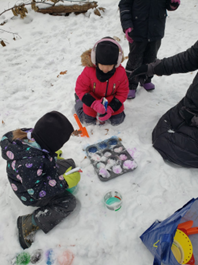 So, whether you have extensive or minimal outdoor time at your center, whether you have a forested area, a field, an open lot, or a small space or even just a few trees in which to explore, nature learning CAN happen. But, I stress that it be explored with that curious mindset. If you are thinking of all of the barriers that may stop you from implementing outdoor experiences for your children, you are not alone. But this is so new, so different! I have so much built into what I already know and do! This is too much work! Change IS hard, but as you read on for practical tools and ideas to integrate more nature into your day, you will find it is not only doable, but full of unexpected gifts. Getting Started Teaching Outside from Get toGreen through Fairfax County schools provides straightforward tips.
So, whether you have extensive or minimal outdoor time at your center, whether you have a forested area, a field, an open lot, or a small space or even just a few trees in which to explore, nature learning CAN happen. But, I stress that it be explored with that curious mindset. If you are thinking of all of the barriers that may stop you from implementing outdoor experiences for your children, you are not alone. But this is so new, so different! I have so much built into what I already know and do! This is too much work! Change IS hard, but as you read on for practical tools and ideas to integrate more nature into your day, you will find it is not only doable, but full of unexpected gifts. Getting Started Teaching Outside from Get toGreen through Fairfax County schools provides straightforward tips.
The North American Association for Environmental Education (naaee) offers three categories to plan for and organize outdoor learning experiences; TEACHING, SAFETY and the ENVIRONMENT.
When we are spending time outside with children, we can learn from both the space and the place. Learning outdoors (simply being outside!) is also a stand-alone benefit to whole-child development…simply being outside is good for children and schools.
- What do I teach?Natural Start: The Teaching and Tinkergarten: Tinkergarten outdoor learning ideas
- It seems so risky! Natural Start: The Safety
- Where? Natural Start: The Environment
Practical tips for clothing and snack time:
Sometimes starting small is best. A new nature walk routine with prompts such as “Tell me more about what you notice” and “Can you say more about that?” Or integrating a math focus such as “Nature explorers, today we are going to notice the nature around us in groups of three” may be one of the most important changes you make this year.
Sometimes re-thinking a routine typically done indoors and/or on a screen and bringing it outside, is best. Read-alouds, journaling, and songs may now take place on foam sit-upons or a tarp. Some extra minutes teaching and practicing outdoor learning routines are well worth the time.
Sometimes planning with your teaching team and doing your own adult nature-scavenger hunts, and surveying the areas for safe and creative play, is what is best.
Nature is joyful. Nature is powerful. Nature is an incredible teacher. I invite you to take the small steps or giant leaps needed in order to provide critically important outdoor experiences for our children. Working as a teacher and coach in countless spaces and places for over twenty years, I can truly say that what nature as a teacher gifts to us, is incomparable.
So, slow down, look around, and ask those questions that nature has been waiting for us to ask.
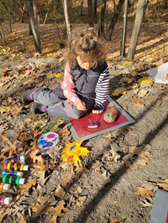 “If we truly want to make nature-based education meaningful and accessible for all children and families, we must strive to approach education in the context of not just the class, or the forest, but the place, this entire remarkable world of which we are all a part.” – Kit Harrington
“If we truly want to make nature-based education meaningful and accessible for all children and families, we must strive to approach education in the context of not just the class, or the forest, but the place, this entire remarkable world of which we are all a part.” – Kit Harrington
Fort building is an activity most children enjoy– who wouldn’t love the opportunity to be the architect of their own space? It’s also an incredible way to promote children’s creativity, imagination, persistence, and STEAM skills.
Why is this a STEAM activity?
Science: children need to navigate the physical properties of a variety of materials to make their fort. Will the fabric keep its shape when draped over sticks, or will it fold in ways the children didn’t anticipate? Will rubber bands be strong enough to hold the sticks together, or will they need to use yarn or glue?
Technology: Older children can use rulers, measuring tape, levels, and more tools to help them plan and execute their forts.
Engineering: Structural engineers need to take into account the materials they’re working with when designing structures for an intended purpose. These young engineers will learn the foundational problem-solving skills when the plan and test their designs.
Art: A sense of aesthetics is crucial in fort design! Children can select their color scheme and decor as they assemble.
Math: Geometry is key here, as children figure out how large a space they need to fit the people they would like inside, and measure their sticks and cloth accordingly.
Building outdoor fabric forts promotes play can help children develop problem-solving skills that will help them later in life. Fabric forts don’t always work out the way kids want them to! They teach children to find new and better ways to achieve the result they want.
How can you get started? Depending on the ages of the children involved, this activity may use: blankets, tablecloths, sticks, lengths of PVC pipe, yarn, glue, paper, rubber bands, and all kinds of other “stuff” that you have on hand!
Creating a nature scavenger color-hunt game is a fun nature-themed activity to get your group outdoors. This is an activity that, no matter their age, they will stay busy and observe as they play creatively and explore outside.
You can use a canvas panel or a piece of cardboard, I would say roughly the size of a medium-large pizza box. You then want to take 10 color paint swatches. I like to take a walk in my space and quickly take 10 pictures to match when I get to my hardware store. This is something that will, of course, change with the seasons.
We did 10 colors; my group is 2.5-4 years old. It’s entirely up to you how you choose to do this; you can cut smaller pieces of cardboard and give each child 5 colors; you can do it as a group as we did. You can add shapes by cutting the paint sample into a circle or triangle. You can also use this as a take-home activity for family engagement. Ask families to bring it back and discuss it with the group.
So after you have the canvas panel or cardboard, the color swatches, and 10 clothespins, you want to hot glue the colors swatches down and the clothespins. Then go explore for colors!
You can set rules for the game, like the color green can not be grass. Once the child finds the color, they yell “I found yellow”, clip it, and attach it to the board. We display our board and showcase it for pick up. Children are always so proud to name what they found and the color it matches.

